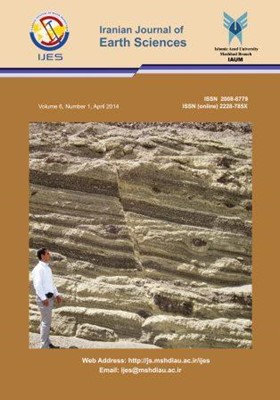The Petrology and Geochemistry of Granitoid Rocks of Troud Area in South-West of Shahrood
محورهای موضوعی : MineralogyElham Shah Hosseini 1 , Afshin Ashja Ardalan 2 , Mohammad Hashem Emami 3 , Mohammad Hossein Razavi 4
1 - PhD student of Petrology, Department of geology North Tehran branch Islamic Azad University
2 - ------
3 - Department of geology IslamShar branch Islamic Azad University, Islamshhar, Iran
4 - Department of geology North Tehran branch Islamic Azad University, Tehran, Iran
کلید واژه: Central Iran, Petrology, Troud, Back-arc, crust melting,
چکیده مقاله :
The area of study is located 120 Km north-east of Shahrood city. In terms of structure and geological classification, this area is located in the northern part of central Iran zone. Granitoids of Troud ranging from monzonite to granite. The main minerals of granitoids are quartz, plagioclase, and orthose. The accessory minerals are biotite, hornblende, sphene, and opaque minerals. Various textures of granular, graphic and prethite are observed in these rocks. Based on various diagrams of major and trace elements, this rock is I-type arc calk-alkaline, Meta to para-aluminous with continental origin form at subduction zone. All these characteristics, combined with low Al2O3/(FeO + MgO + TiO2) and (Na2O +K2O)/(FeO + MgO + TiO2) ratios and high Mg# values, suggest an origin through dehydration melting of alkaline mafic of lower crustal source rocks.
The area of study is located 120 Km north-east of Shahrood city. In terms of structure and geological classification, this area is located in the northern part of central Iran zone. Granitoids of Troud ranging from monzonite to granite. The main minerals of granitoids are quartz, plagioclase, and orthose. The accessory minerals are biotite, hornblende, sphene, and opaque minerals. Various textures of granular, graphic and prethite are observed in these rocks. Based on various diagrams of major and trace elements, this rock is I-type arc calk-alkaline, Meta to para-aluminous with continental origin form at subduction zone. All these characteristics, combined with low Al2O3/(FeO + MgO + TiO2) and (Na2O +K2O)/(FeO + MgO + TiO2) ratios and high Mg# values, suggest an origin through dehydration melting of alkaline mafic of lower crustal source rocks.


